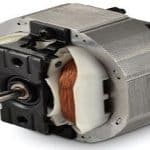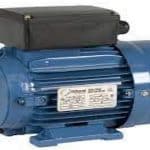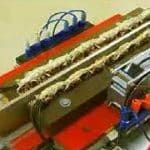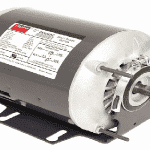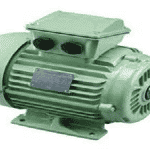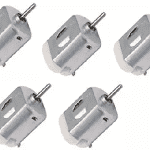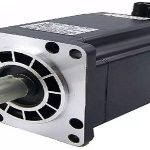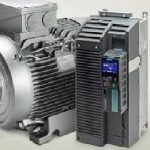The shaded-pole motor plays a significant role in low-torque applications. Although these motors have some limitations in terms of efficiency & starting torque, so current technological developments assure an enhanced & more sustainable future for these types of motors. Understanding this motor’s working principles, benefits, and drawbacks with its applications is essential for choosing the right electric motor for a particular application. This … [Read more...]
Capacitor Start Motor : Circuit, Working, Phasor Diagram, Characteristics, Advantages & Its Applications
A capacitor motor is a single-phase induction motor that has two windings; the main winding and auxiliary winding. The main winding gets energy from the power line directly whereas a secondary winding like auxiliary winding gets energy throughout a capacitor. This kind of motor has some benefits like higher starting and running torque. The currents within this motor’s two windings will differ in phase & producing torque. There are three kinds of … [Read more...]
What is Linear Induction Motor : Working, Construction, & Its Applications
An induction motor is a generally used AC electric motor. In this motor, the electric current required within the rotor to generate torque is attained through electromagnetic induction from the stator winding’s rotary magnetic field. The rotor of this motor can be a wound type or squirrel cage rotor. Induction motors are also called ‘asynchronous motors’ because they operate at a less speed as compared to their synchronous speed. There are different types … [Read more...]
What is Reluctance Motor : Construction & Its Working
The development of reluctance motor took place in the year 1838 so as to boost a locomotive. Here, the mechanical switches used for windings energization only hold the capability to provide energization for the motor at minimal speed levels. And in addition, electronic devices such as transistors, IGBTs are needed for driving the motors. But in 1920, the development of variable reluctance motor took place in the U.K and this development was used in many … [Read more...]
What is Split Phase Induction Motor : Working & Its Applications
The development of induction motors took place by a French scientist named Francois. He was the person who formulated the presence of revolving magnetic fields which are called Arago’s rotations and this happened in the year 1824. Whereas during the period 1879, Walter Bailey exhibited the same principle through manually switching ON and OFF which is successfully called the initial primitive induction motor. And the first single-phase AC type of induction … [Read more...]
What is a Permanent Magnet Synchronous Motor & Its Working
The creation of a synchronous motor took place in the year 1869 which was almost two decades back before the discovery of the induction motor. In the early stages of the 20th century, the development of induction motor happened, and its application was extensively developed. Whereas the reach of the synchronous motor was not more till the early period of the 1920s. Nearly, 5 years were needed to progress the necessary initial ability by interaction with … [Read more...]
What is a Mini Motor : Types & Its Working
Hopefully, we are living in a world that revolves all-around digital trends and technologies. Just flickering a switch will provide power and we find the operation of many devices through a simple motor. Many of the household and commercial devices are included with mini motors and these days they gain more prominence because of their simple design, streamlined operation, and many other features. So, this article completely describes the concepts related … [Read more...]
What is Hybrid Stepper Motor : Working & Its Applications
As we all know that the main functionality of any motor is to convert electrical energy to mechanical energy, speed, and torque. So, the exceptional feature of stepper motors is they hold the ability to precisely managing control related to functional angle and speed. Let’s start with the concept of the stepper motor and then move ahead to know about the hybrid stepper motor. So, a stepper motor which is also termed as stepping motor comes under the … [Read more...]
What is Variable Reluctance Stepper Motor : Construction & Its Applications
A variable reluctance stepper motor is electromechanical energy which converts electrical energy to mechanical energy. The main difference between the stepper motor and other DC motors is in stepper motors the motion of the rotor is achieved in steps. Stepper motor also works on DC supply but the principle of operation is not Lorentz force law. It works on the principle of reluctance. That is, the magnetic flux always tries to follow in the least … [Read more...]
What is Synchronous Reluctance Motor : Working & Its Applications
Synchronous reluctance motor is an electromechanical energy conversion device that converts electrical energy to mechanical energy. Unlike DC motor which works on Lorentz force law, synchronous reluctance motor works on the variable reluctance principle. The main characteristic of this motor is, it runs at synchronous speed. Due to magnetic locking, it follows the synchronous speed of the rotating magnetic field which is formed at stator poles. Due to … [Read more...]
